Programm
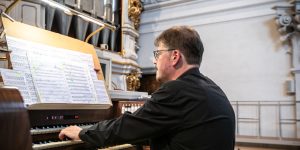
Organ Music in the Field of Tension Between Inspiration, Compostition and Improvisation
Klaus Sonnleitner (AT)
Klaus Sonnleitner’s organ concert takes the audience from Johann Sebastian Bach and Wolfgang Amadeus Mozart to French sound worlds and improvisations in the spirit of Anton Bruckner.
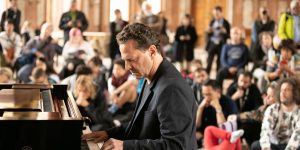
Orogenesis: Spacial Piano Improvisation Inspired by the Formation of Mountains
Rupert Huber (AT)
When two continental plates collide, one becomes subducted beneath the other. Rupert Huber´s piano improvisation represents this process by putting sound to the formation of an imaginary mountain.
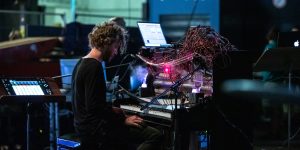
A-MINT
Alex Braga (IT)
There is nothing simpler yet more complex than a human being. The challenge of Alex Braga is to create a new and organic kind of sound with the aid of a revolutionary new instrument called A-MINT. It is an adaptive artificial intelligence working in real-time for the artist and enabling any musician to explore infinite creativity.
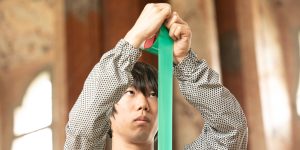
SHOJIKI “Play Back” Curing Tapes
Muku Kobayashi (JP), Mitsuru Tokisato (JP)
Rewinding curing tapes with a motor. The performers use a switch to control the rotation direction of the motor and its ON/OFF. Each time the tape is rewound on to the motor axis, it makes peeling sounds and continuant sounds.

NOISA
Koray Tahiroglu (FI/TR)
NOISA, the Network of Intelligent Sonic Agents, is an interactive music system that monitors the performer’s actions and provides autonomous and non-intrusive counteractions. In this co-creative music performance, intelligent sonic agents are designed to support the music performance by providing responses that encourage and maintain the communication and motivation of the performer with the NOISA system.
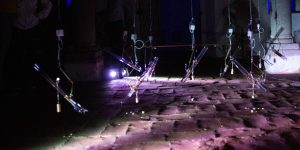
Soundform No.1
Yasuaki Kakehi (JP), Mikhail Mansion (US), Kuan-Ju Wu (US)
Soundform No.1 is a minimalistic soundscape and kinetic art installation that transforms heat energy into a poetically evolving, spatiotemporal composition. Through modulations of heat, light and motion, the artwork creates an ever-changing atmosphere of Zen-like tonal patterns and visual effects.
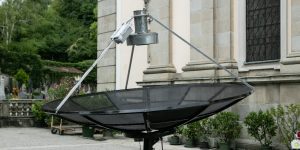
Fantasie#1
Quadrature (DE) in collaboration with Christian Losert (DE)
Via a radio telescope in front of the venue, the noise of the skies is performed by a self-playing organ. Little by little, neural networks take control over the organ and seek out familiar harmonies in the otherworldly noises. Ideas of melodies evolve as the artificial intelligence begins to fantasize about familiar tunes in these alien sounds.
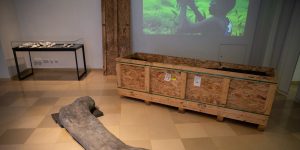
Fossil Futures
Nora Al-Badri (DE), Jan Nikolai Nelles (DE)
"Oskar" is what Germans affectionately call "their" Dino, the world's largest dinosaur skeleton, which is at home in Berlin's Museum of Natural History. Nora Al-Badri and Jan Nikolai Nelles tried to find out where it originally came from and how it finally landed here. They received little information from the public authorities, but with the help of leaked data, artificial intelligence and 3D scans, the history of the fossil could be reconstructed. The trail led to the south of Tanzania. Under German colonial rule, tons of petrified bones were found there and brought to Germany. Using state-of-the-art technology – including a "Virtual Reality Museum" – Fossil Future poses the question of stolen identity, cultural heritage and public property.
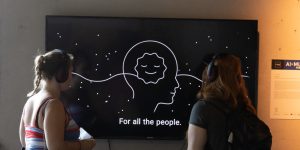
Endel
Oleg Stavitsky (RU)
Endel is a technology that creates personalized sound environments for stress reduction, productivity boosting and adjusting mind and body to different tasks and goals. Sound changes on the fly according to various personal inputs like location, time, heart rate and cadence. Endel's technology is already presented as an ecosystem of products; it’s also designed to be integrated into various hardware and platforms in mobility, hospitality, retail, workspaces, etc.
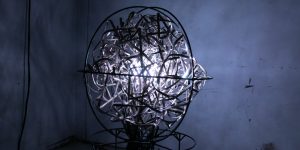
Speculative Artificial Intelligence
Birk Schmithüsen (DE)
The work consists of a series of aesthetic experiments designed to make processes of artificial neural networks perceptible to humans through audiovisual translation. Exp. # 1 examines inner behavior during the prediction and learning process. Exp. # 2 questions an AI’s capacity for empathy and purpose while communicating with a second AI.


